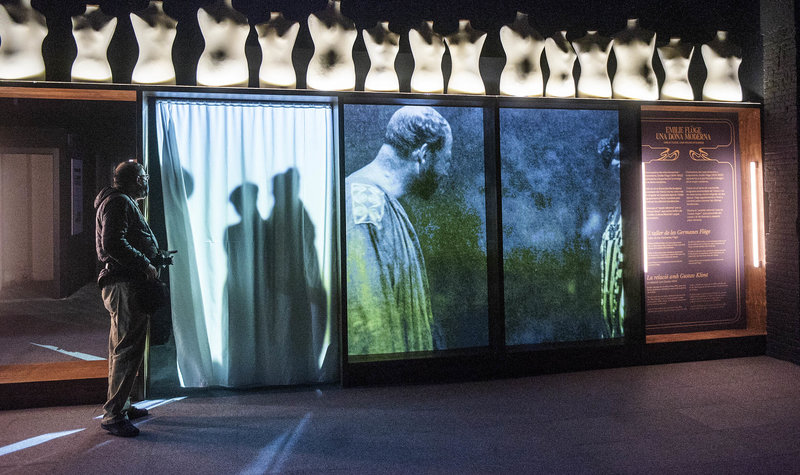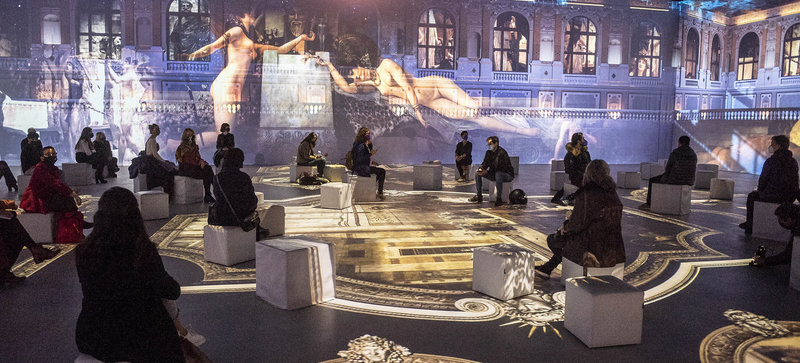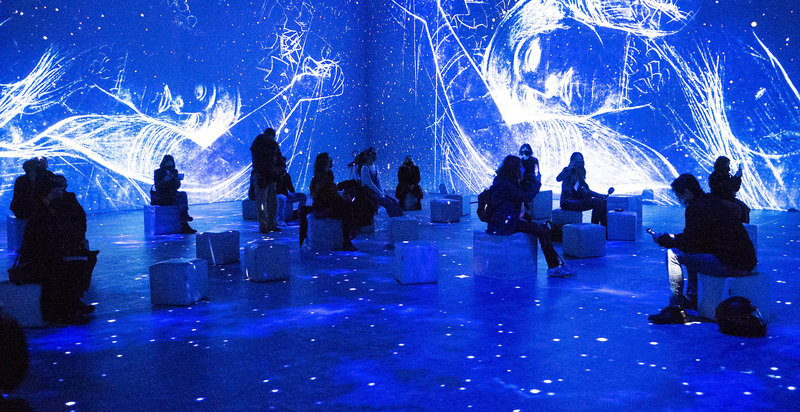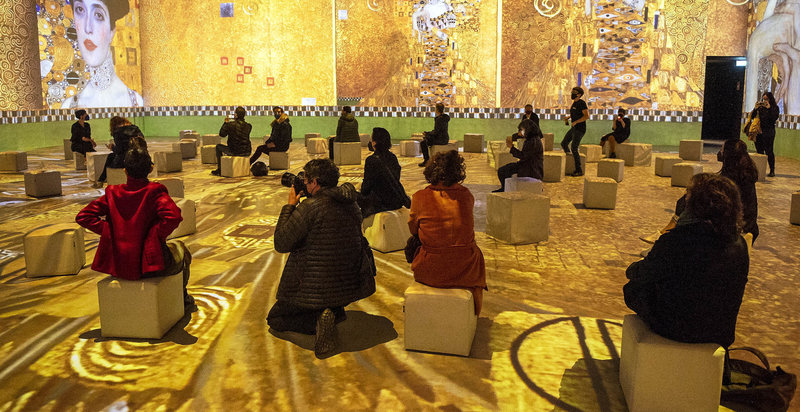PERE BOSCH i CUENCA. pbosch@lrp.cat
Gustav Klimt’s universe
The Ideal Digital Arts Centre invites us to immerse ourselves in the world of the leading representative of Austrian Modernism
Contemplating the spectacular Beethoven Frieze in the Secession Building or a visit to the Belvedere Gallery to enjoy such emblematic works as ’The Kiss’ and ’Judith and the Head of Holofernes’ are essential if we to learn more about one of Vienna’s most amazing artists, Gustav Klimt (1862-1918). Without actually travelling to Austria’s capital, few things can bring us as close as the current immersive experience at the Ideal Digital Arts Centre, in the Poblenou district of Barcelona. The title of the exhibition says it all: ’Klimt. The immersive experience’. Without the original works present but through the use of new technology, the experience immerses us in the world of one of the most fascinating artists of the last century. And it invites us to do so in a very different way than we are used to in traditional museums. The exhibition highlights Klimt’s modernising spirit and his desire to break with the past, which led him to help found the Secession, a movement that called for creative freedom in the face of conservative art. His motto was very revealing: At all times art; in each art freedom.
Klimt’s work, halfway between symbolism and art nouveau, provoked admiration and hatred. An episode that sums it up relates to the paintings he was commissioned to do to decorate the great hall of the University of Vienna. When he presented the first of the three paintings, still unfinished, he was accused of pornography and artistic incapacity, a debate that forced the Minister of Education to intervene.
Catalan Modernism
On entering, the visitor walks down a corridor that acts as an introduction to the exhibition, and of Modernism. The movement had common elements around Europe, as well as some national particularities. As the two curators of the exhibition, the Catalan Imma Fondevila and the Austrian Theresia Nickl, point out, the exhibition focuses on two thematic pillars: modernism and feminism. We are told about the Vienna Secession, of which Klimt was a promoter and member, but also about Catalan Modernism, one of the most brilliant periods in Catalonia’s artistic history. In the same year that the Austrian movement was founded (1897), the Els Quatre Gats tavern opened, the lair of artists such as Casas, who were ready to champion avant-garde art. Fondevila points out that the exhibition highlights “the hitherto little-known relationships between artists and activists in Vienna where Klimt lived and the Barcelona of that time.”
The exhibition also highlights the role of women in Klimt’s life. He once said: “I have no self-portrait. I’m only interested in other people, especially women.“ Klimt was surrounded by women. Until his death in 1918, he lived with his mother and sisters. He never married but after his death there were 14 paternity claims. Yet the woman with whom he had a particularly close relationship was Emilie Flöge, a designer, businesswoman and someone who well represents the model of woman struggling to achieve her independence. Some argue that she and the artist are the figures in his most famous painting, ’The Kiss’.
360º immersion
The centre’s main room, with over 1,000 square metres of 360º screen, is the heart of the exhibition. For 35 minutes, the viewer is fully immersed in Klimt’s universe. From all corners of the room emerge the most iconic elements of his work, from his Byzantine-inspired decorations to explosions of his favourite colour gold, which so heavily features in such paintings as ’The Kiss’. While music helps to overwhelm our senses, it’s worth sitting on one of the cubes in the room to absorb the sensory overload. The 360º screen, which cost about a million euros, is the work of Layers of Reality company, in collaboration with the Belgian studio Exhibition Hub. A number of artists and creative digital arts studios, both domestic and international, such as Dirty Monitor, Broomx, ActiveMe, Jordi Massó and Sergio Albiac, have also contributed to the project.
The centre has also opened a new 300 square-metre room that explores Klimt’s best-known work, ’The Kiss’, with a hanging sculpture of the work and three-dimensional mapping. The exhibition ends with a virtual reality room where the visitor can get a more personal immersive experience of the works of the Austrian artist. All in all, Ideal offers an intense way to explore the universe of an artist whose aesthetic helped to transform the visual arts of his time.
Review Digital Arts
An ‘ideal’ home
The Ideal Digital Arts Centre in Barcelona opened in October 2019 in what had formerly been the Ideal cinema, which originally opened in 1917. Located in the Poblenou neighbourhood of the Catalan capital, Ideal is well placed, as the district has become the heart of the city’s fast-growing digital and technology start-up sector.
More than 200,000 visitors
Since it opened in the autumn of 2019 with an exhibition dedicated to impressionist painter, Claude Monet, the Ideal Digital Arts Centre has become a world-class cultural space. More than 200,000 people have visited the centre so far, some 40,000 of whom came to see the exhibition that took place between September 2020 and April 2021. This exhibition invited us to take a walk around the Barcelona of the 1950s and was based on the photographs of Joana Biarnés, Francesc Català-Roca, Colita, Oriol Maspons, Xavier Miserachs and Leopoldo Pomés.
The number of visits Ideal has accrued since its opening is even more impressive when we take into consideration the closures and restrictions imposed last year due to the coronavirus pandemic.










